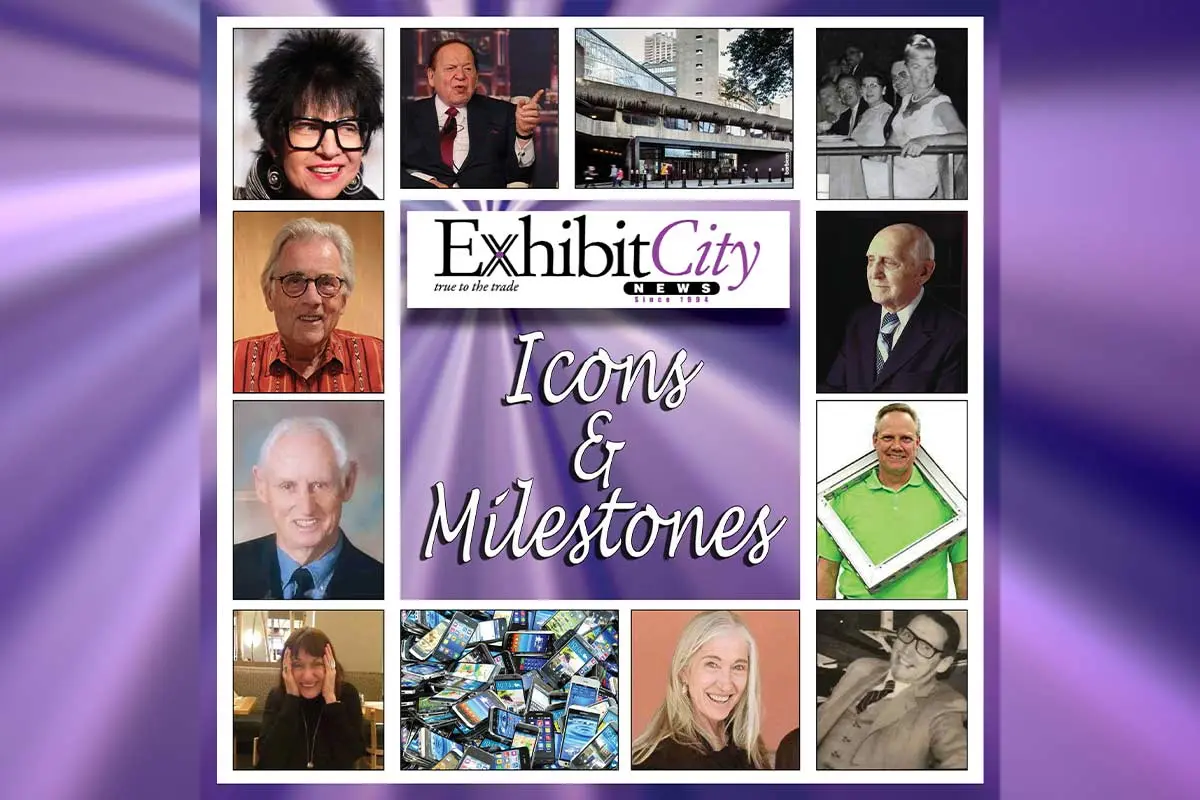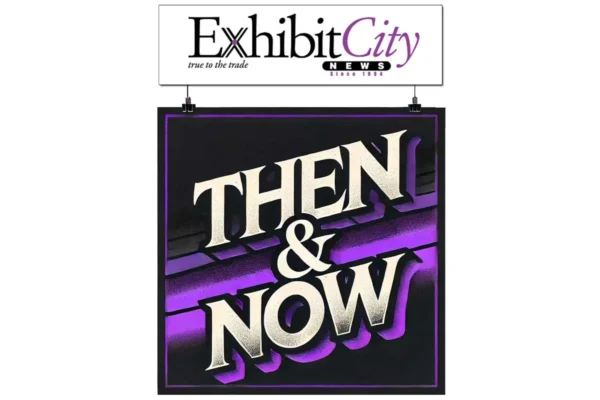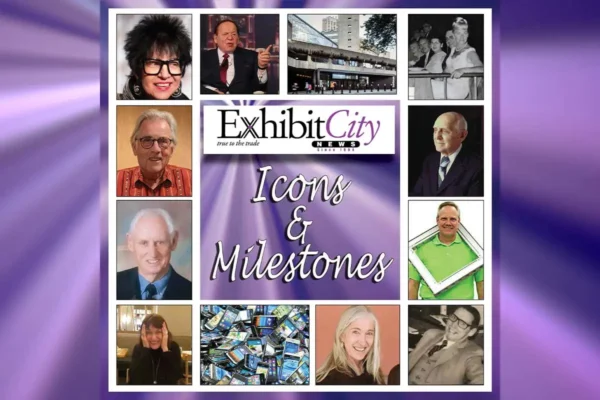The Icons & Milestones Series by Mark Hebert
The following is part of the Icons & Milestones Series, which started in the Exhibit City News 30 Year Anniversary Book. This series looks at Icons and Milestones from across the tradeshow industry. As we give honor in our Icons & Milestones series, we celebrate their revolutionary approaches to all aspects of the tradeshow industry. Thank you to Bob McGlincy and Larry Kulchawick for their assistance with this section.
In this we look at Hazel Hays, George P. Johnson, and Fred Kitzing. For the full Icons & Milestones series, please click here.
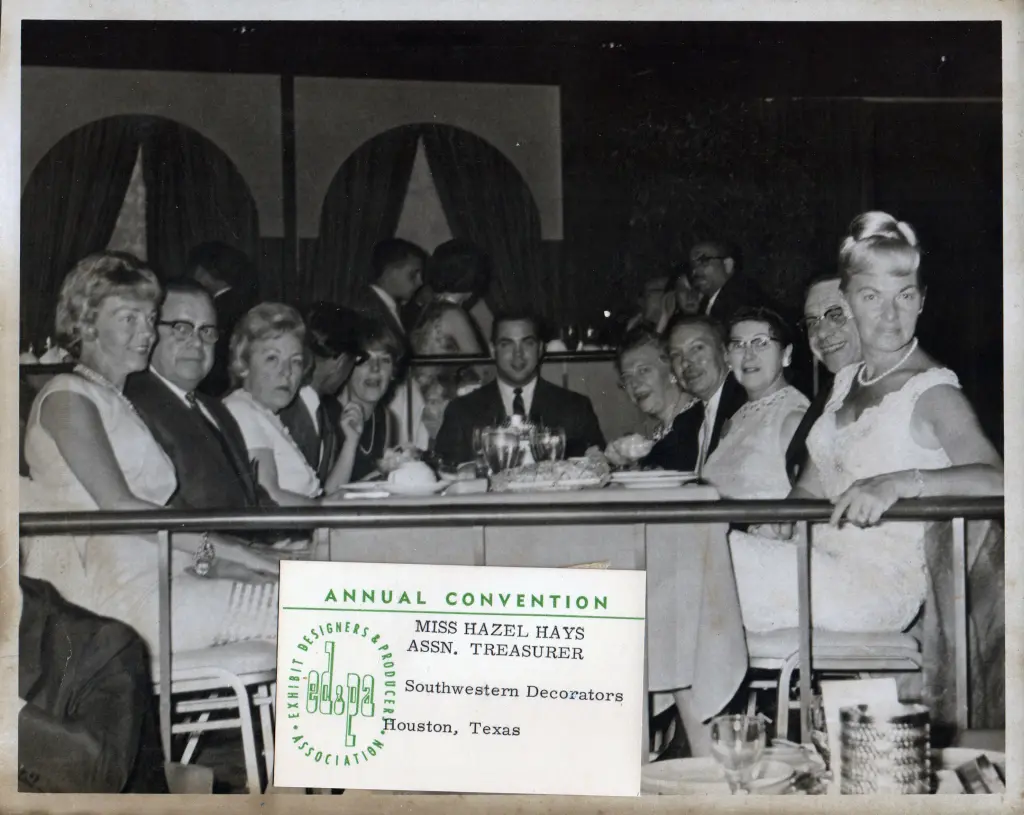 Hazel Hays
Hazel Hays
Trailblazing Advocate in Tradeshow Services
Hazel Hays was a pioneering female leader in the tradeshow industry, remembered for her work as a principal at Southwestern Decorators in Houston and her later contributions at Freeman. A key figure in the Exhibit Designers and Producers Association (EDPA), Hays became known for her dedication to service and her advocacy for inclusivity in a male-dominated field. Her efforts helped lay the groundwork for future female professionals in tradeshow design, production, and services.
Championing Community and Inclusion
In the early days of the EDPA, industry events were largely exclusive gatherings of male business owners. Hays worked to make these events more inclusive, especially for the spouses who attended. She organized social activities for the wives of EDPA members, creating a welcoming atmosphere and fostering a sense of community. Her actions helped soften the “good ol’ boys” culture that pervaded the industry, gradually opening doors for broader female involvement.
Legacy and Recognition
The EDPA honors Hays’ contributions through the Hazel Hays Award, one of the association’s highest accolades, which is given to professionals who demonstrate outstanding dedication and service. Through her quiet resilience and dedication to community, Hays helped shift the tradeshow industry toward greater inclusivity, leaving a legacy that has inspired generations of professionals.
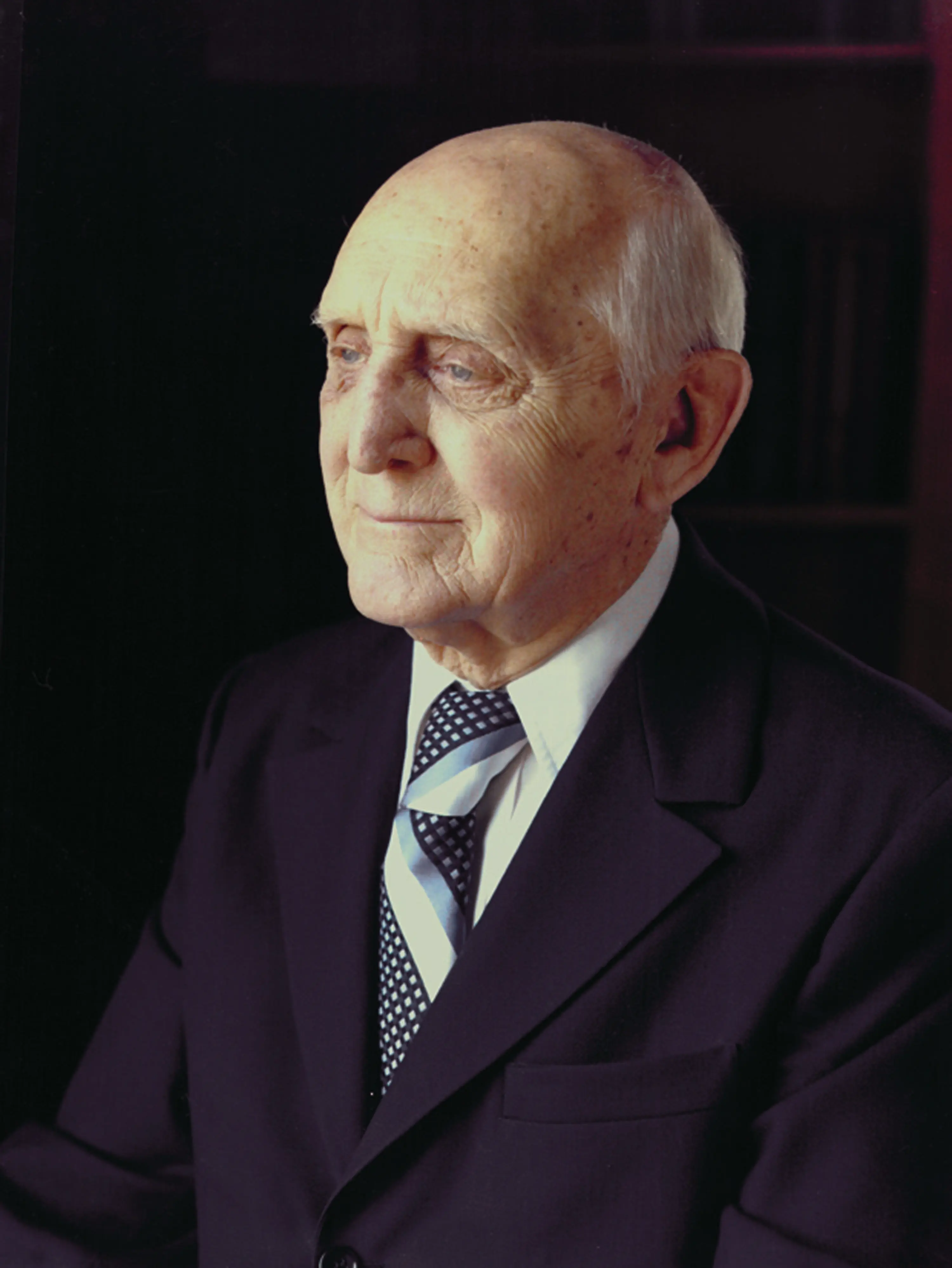 George P. Johnson
George P. Johnson
Pioneer of Experiential Marketing
George P. Johnson founded the George P. Johnson Company in 1914, starting as a flag-making and sail-repair shop in Detroit, Michigan. The company quickly transitioned into producing exhibits for the burgeoning auto industry, including the first International Auto Show in New York in 1956. This work set the stage for GPJ’s evolution into a leader in experiential marketing and event management.
Innovations in Exhibit and Event Design
Johnson’s innovations include the introduction of the first vehicle display turntable in 1961, now a staple at auto shows worldwide. Under the leadership of Johnson and later his grandson, Robert Vallee Jr., the company expanded its services and geographical reach, opening offices in major U.S. cities and internationally. GPJ became known for creating immersive and engaging displays that utilized cutting-edge technology, such as simulated motion and virtual reality, particularly for major auto shows.
Global Expansion and Notable Projects
In the late 20th and early 21st centuries, GPJ expanded globally, opening offices in Europe, Asia, and Australia. The company secured major clients like IBM, managing over 1,000 events annually, and contributed to significant events such as the 2008 Beijing Olympics and the 2010 Shanghai World Expo. These projects showcased GPJ’s ability to create experiences that bridged cultural and linguistic gaps, using interactive exhibits and storytelling.
Legacy and Impact
Today, GPJ is recognized as a global leader in experiential marketing, known for its innovative approach to creating brand experiences that engage and captivate audiences. The company’s legacy continues to shape the industry, influencing how brands interact with consumers through live events and digital experiences.
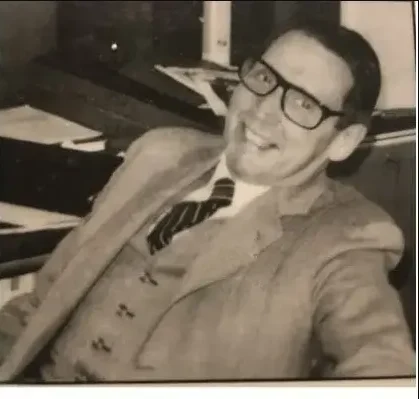 Fred Kitzing
Fred Kitzing
The Father of Tradeshow Marketing
Fred Kitzing was a pioneering figure in the tradeshow industry, widely recognized as the “Father of Tradeshow Marketing.” He established KITZING Inc., one of the most influential exhibit design and building firms in Chicago, which operated from 1950 to 1993. Kitzing’s innovative approach to tradeshows transformed them from static displays into dynamic marketing tools designed to drive sales and engage audiences.
Revolutionizing Tradeshow Marketing
Kitzing was among the first to view tradeshow exhibits as “machines for selling,” focusing on creating strategies that attracted and closed customers. He emphasized pre-show and at-show promotion, proper training for exhibit staff, and the use of engaging presentations to draw in attendees. This approach included utilizing live performances, such as magicians and skaters, to illustrate product benefits in memorable ways.
Kitzing’s contributions extended beyond just exhibit design. He was instrumental in founding key industry organizations, including the Exhibit Designers & Producers Association (EDPA) and the Trade Show Bureau, now known as the Center for Exhibition Industry Research (CEIR). His influence helped establish the modern practices of tradeshow marketing, making it an essential component of the marketing mix for many businesses.
Legacy and Impact
Fred Kitzing’s impact on the tradeshow industry is profound. He not only transformed the way exhibits were conceived and executed but also mentored many future leaders in the field. His innovative ideas and dedication to professional excellence earned him numerous accolades, including the Hazel Hays Award from the EDPA and the International Exhibitors Association Distinguished Service Award.
Kitzing’s legacy continues to inspire industry professionals, emphasizing the importance of creativity, strategic planning, and customer engagement in successful tradeshow marketing.






